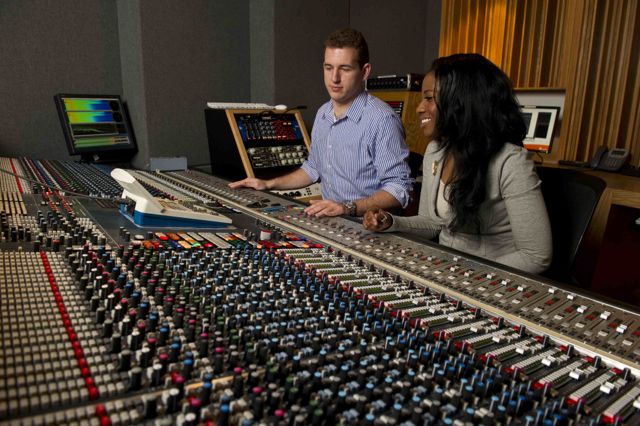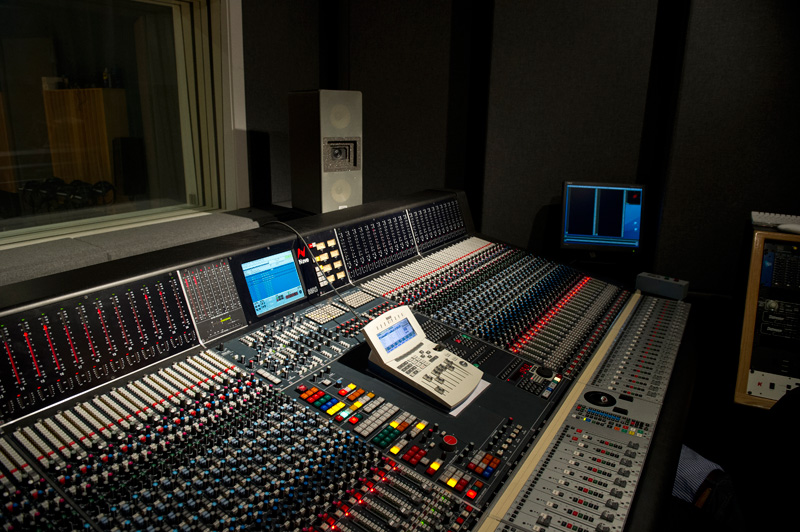The Peabody Institute of the Johns Hopkins University is home to one of the oldest music conservatories in the United States. A training ground for artists in practically all forms of performance and composition, the Institute’s training also extends to the technological with the Recording Arts and Sciences track, among the most elite programs of its kind. In fact, if you are talented enough to attend the program, you may not necessarily look for it. It may look for you.
The Recording Arts and Sciences track is an intensive five-year program that trains students as both musicians and audio engineers. Students are those who have espoused a deep interest in music and math and science, and have strong academic records that reflect those interests. Alumni of the program go on to work as radio producers, broadcast engineers, studio recording professionals, video game composers, and designers of AV software and hardware, among many other roles.

“Our students are sought after,” says Ed Tetreault, who oversees operations for the Recording Arts and Sciences program. “They get a conservatory level music education at the same time they get an advanced engineering education. It’s a double major and they work together well. If you’re an audio engineer, you’re working with musicians. By being a highly trained musician yourself, you gain an additional perspective that allows you to be equally effective on both sides of the Recording Studio glass.”
Tetreault says the school “hand picks” students who score higher than 700 on their math SATs and list music as a major interest. “We will approach them and say, ‘You love math and science, you love music. We can help you put them together.'”
The essence of Recording Arts and Science’s approach is hands-on immersion. Students record and work with an immense amount of audio content from the conservatory, from solo instrument recitals to full-on orchestral ensembles, in addition to their regular course work in which they are editing, producing, and mastering sound. All of their work is done in one of four primary control rooms, and all of those control rooms are connected to an EVO shared storage media server.
Four Control Rooms, One Server
EVO has served as the media hub of The Recording Arts and Sciences program for nearly a decade and has played an important role in transforming how the program operates and how students work.
Each of the program’s four control rooms have different systems and are tailored to different styles of working, according to Tetreault, so that students will be comfortable in any role after they graduate. However, all rooms feature two primary workstations, Avid’s Pro Tools HD, where most of the recording happens, and Merging’s Pyramix Virtual Studio, used primarily for editing and mastering. Each control room has a fiber link running from the Pro Tools suite to the central server room where EVO lives.
Tetreault says centralizing everything on EVO made a difference for the program in a lot of ways. For one, EVO provided an important upgrade to their network. “The direct link to the EVO made things incredibly stable,” he says. “Before EVO, our internal network was not stable enough to record concerts on.”
Another was that EVO spurred them to standardize their systems. Before, the program had four rooms with four different configurations. Now, says Tetreault, “we can record a session in Studio A and mix it in Studio C. Students can move from studio to studio and access the same project with exactly the same plugins.”
Freedom to Move Around
That ability to move things around and have full access to content is paramount. EVO’s impact has a lot to do with how the Peabody Institute is built and where the control rooms sit.

“It felt like we were walking a mile a day,” says Tetreault. “We essentially had four disconnected islands. If a student wanted to work on their project in another room, they had to put it on a drive and take it there.”
Aside from the hassle and inconvenience, physically carrying drives around threatened the safety and integrity of recordings. Dropped drives and other mistakes threatened not just the work of Recording Arts and Sciences students, but the degree recitals of the conservatory students they recorded. “There’s never been a better proving ground for equipment than a school,” says Tetreault with a chuckle. “If there’s a way to break something, students will find it.”
His job was to find a “student-proof” solution, which EVO provided.
A 24/7 Media Server
Speaking of student proof, EVO wouldn’t have proven so essential to the Recording Arts and Sciences program if it hadn’t been easy to use and accessible for the students and faculty who use it. A lot. According to Tetreault, recording performances is where his students get all their hands-on learning, and Peabody has a huge number of performances — nearly 1,000 a year. All of them, from individual performances to major concerts for all of the school’s major ensembles, are edited and archived, and most of that work is done by the students themselves. The control rooms are open 24/7 and students book times whenever they can get in.
“It’s not uncommon to have all four going at once. This is where having a smaller program really helps,” says Tetreault, who notes the program has approximately 10 students per class.
The EVO is partitioned for each class, and there are multiple drives per class, depending on the work they do. While the first and second year theory based Recording classes need relatively little space, the more advanced Recording classes need a lot more for doing multi-track projects at higher resolutions.
“There’s never been a better proving ground for equipment than a school,” says Tetreault. “If there’s a way to break something, students will find it.”
A System to Grow on
The next big game changer on Tetreault’s agenda: file sharing. With the recent upgrade to a new EVO server, he and the rest of the faculty are exploring how to make the ShareBrowser file management system a centerpiece of how the program manages its voluminous class and performance content, along with archives that stretch back to the 1930’s.
At a minimum, Tetreault says that ShareBrowser will allow students to access not just their own work but the program’s complete archive, which is currently housed only in physical CD masters. ShareBrowser will make archival access easier by allowing students and faculty to search and index all of their media storage.
“ShareBrowser’s functionality is fantastic,” says Tetreault, “It will allow us to do a lot of the things we’ve been planning for a long time.”
Tetreault also held out the possibility of doing more with the school’s video recording, and even expanding to another EVO to support it. His experience so far has him optimistic. EVO has never failed, and the integration of the new EVO was seamless and simple.
“A decade ago”, Tetreault says, “I had no idea how this would work. But EVO has become vital to how we operate.”
About Studio Network Solutions (SNS)
SNS shared storage solutions are at the core of optimized video workflow for professional content creation workgroups worldwide. The SNS EVO shared media storage server combines high-performance with extensive connectivity, including 10Gb/s Ethernet and Fibre Channel. With EVO’s included ShareBrowser asset management software, you can search, index, preview, tag, and verify video and project assets with no additional software required. NAS, SAN, or both at the same time, EVO is designed for online real-time video editing with leading video/audio applications including Avid Media Composer, Adobe Premiere Pro/CC, Final Cut Pro (FCP), Final Cut Pro X (FCPX), DaVinci Resolve, Pro Tools, and others.
Read more user stories or contact SNS now to see how the EVO shared media storage server can help your company.

